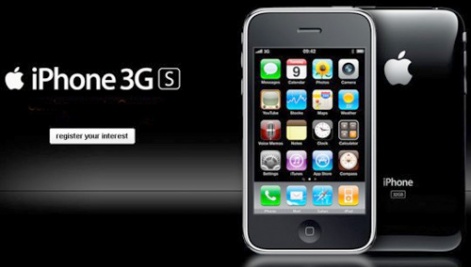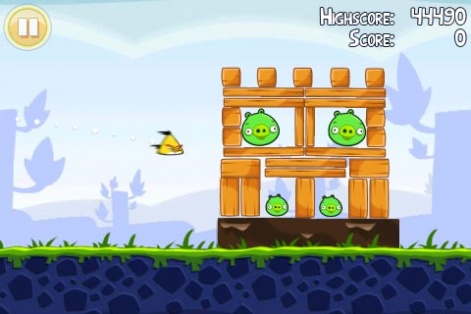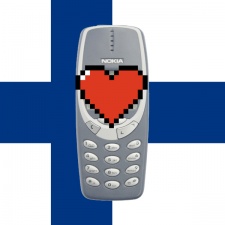In the build up to Pocket Gamer Connects Helsinki 2015 - which runs from 7-8 September 2015: get your tickets here - this week, we're looking back over the history of the Finnish mobile games industry.
You can read the full set here.
The history of Finnish mobile gaming in the early 2000s is the history of relative success.
Yet despite given the nature of the business, many of the largest mobile game developers in Finland were owned by foreign companies such as Digital Chocolate and THQ.
The principal problem when it came to developers having direct responsibility for their own success was due to the nature of mobile content distribution.
Developers relied on publishers and aggregators, who in turn had to try and persuade the mobile operators - who had all the power - to embed their games on handsets (nicknamed decks).
That led to a disastrously top down commercial relationship that, was extremely unfair for developers. Mobile operators almost exclusively favoured big name brands over original IPs, took hefty revenue cuts in return for their position, and had little interest in developing proper processes such as sales reporting.
Combined to the simple issue that mobile gaming handsets were often ill-suited to gaming, with colour screens and 3D animations a rarity until 2005 onwards and keypads ensuring rich control mechanics were hard to implement, the simple fact was mobile gaming was an unprofitable niche for the majority of developers.
The fall out from the N-Gage's failure left many companies in an uncertain position.
And while Finland benefitted from Nokia, the fall out from the N-Gage's failure left many companies in an uncertain position.
Indeed, as Nokia rethought its games strategy, funding began to dry up. This left companies fighting to survive, attempting to hold out successfully in a harsh industry, dominated from the top down.
Rise of the smartphone
In 2007-2008, however, a revolution took hold in the industry that would sweep the operators out of power and usher in an indie revolution. Apple's arrival on the scene in 2007 would herald a complete shift in the industry.
Why the revolution swept in so comprehensively was a result of Apple solving two of the major problems in the mobile ecosystem.

On a technological front, the iPhone dealt with many of the major problems in the industry at a stroke. On a gaming front, touchscreen controls allowed developers to create better controls for their games as well as offering a large, 3D-capable canvas on which to craft experiences. The handset also took a big step towards solving the digital distribution issue by allowing users to utilise mobile data and wifi to access content.
That second element of the technological solution combined ably with the second half of Apple's revolution: the introduction of the App Store.
Would Angry Birds have succeeded without the App Store? I can say no, definitely not.Matthew Wilson
A digital distribution platform that allowed developers to push their games to a global user base, the App Store gifted developers control over their apps, gave them access to their sales performances and allowed them to market it how they saw fit in exchange for 30% of their sales.
In a stroke, Apple offered a solution to the distribution problem, which allowed developers to succeed.
And it is in that context that one studio managed to rise from minor Finnish has been to global success story: the now ubiquitous Rovio.
Soaring high
"Would we have succeeded without the App Store? I can say no, definitely not." says Matthew Wilson.
Rovio's Senior Publishing Manager joined the company at the end of 2008, prior to the release of Angry Birds. He saw firsthand how the store helped the game take off.
"Without these guys at the App Store, Angry Birds wouldn't be as big as it is. The number of gamers has increased massively in total as a result of it," he comments.
"And talking as someone who worked in mobile for a long time, I had only really previously played two games on phones, Snake and Tetris."

But while the App Store certainly helped distribute the game, the rise of Angry Birds is also a story about iteration and how hard work in the sector led to the creation of a compulsive mobile game.
From the demoscene
Like many of the other companies so far encountered in this history, Rovio had been scrabbling around under numerous auspices since 2005 trying to make a living .
Founded by three students in 2005 following an Assembly Conference, the organisation that now runs Finland's legendary demo scene, their early years were mostly about developing to make ends meet.
They had released a number of games for a number of platforms including Bounce Boink Voyage in conjunction with Nokia, and Totomi, a J2ME title that would become the company's first iOS game to little acclaim.
We got a four man team together and started work to develop what would be Angry Birds.Matthew Wilson
In fact, they wouldn't truly begin the process of breaking through until Angry Birds arrived as a project late in 2008. It is oft repeated that this game was the 52nd title before they achieved success; a mantra used to reassure individuals about the nature of success both inside and outside of the mobile gaming industry.
Yet it might be lesser known that the reason this idea resurfaced was due in part to another historical accident: a cancelled project.
"We had been paid up front for a project but it got canned", Wilson says.
"So we got a four man team together and started work to develop what would be Angry Birds."
Even more interestingly, the now famous slingshot mechanics were not initially included in the game. "It wasn't a slingshot game at first - it was a pattern-matching game" he reveals.
It was only when Rovio co-founder, Jarno Väkeväinen, looked at the game again, added powers to the birds and created those easily tumbling blocks that the slingshot mechanics came into place.
Lift off
That laid the ground for the creation of the addictive title that vacuumed up player time across the world. But the Rovio success story needed the opportunity provided by a global distribution channel outside of the operators to break out and to be able to prove that they really deserved a push for their game.
According to Wilson, Rovio developed the games 'for three or four months, put it out and contacted Chillingo [a mobile publisher] as we thought it had legs'.

"They helped us to promote it, work on the UI flow and launch it around the world. We didn't get featured at first and ended up with something like 40,000 downloads - nothing to change our lives," he says.
But what Wilson and the Rovio team had seen was something that the App Store had introduced to help assess the quality of an app - 5 star reviews in abundance.
Armed with that knowledge, they were able to push their publisher to give them a boost.
"We got a feature with Chillingo with our new update to the game after seeing Lima Sky [maker of Doodle Jump] get one for their game."
With that boost and confidence on their minds, Wilson was then able to exploit the global markets and take hold of consumer interest by grabbing features in smaller countries.
In April 2010, Apple featured Angry Birds in the US and it topped the paid game charts for an entire year.
"Looking at iPhone content, I found a review site in Denmark, contacted them and got reviewed and boosted to top 5 - did this in a bunch of smaller territories" he says.
"We'd only get 200 installs a day but it showed that we could stick."
As a result of that, they could again go back to Chillingo and get the push they wanted in the really big markets like the US.
With more content added, a price drop, from $1.99 to $0.99, and a cinematic trailer for the game, Angry Birds got Apple's and was featured on the App Store across Europe at the end of 2009.
The bandwagon was well on the way and yet it still wasn't at the top of its cycle. In April 2010, Apple featured the game in the US and it topped the paid game charts for an entire year consecutively on the back of that.
By the summer 2010, Peter Vesterbacka had arrived with the aim of getting the company 100 million downloads and set about building the brand that would end up on t-shirts from Toronto to Timbuktu.
In truth, the rise of Angry Birds relied heavily on traditional marketing tactics to succeed. But at the same time, those tactics succeeded in the context of the market that Apple had created and it was the App Store environment that allowed the company to succeed.

And this success was to have a further knock-on effect in the rest of the industry in Finland.
Freeing the Finns
"The success of Rovio was amazing" according to Suvi Latva of Neogames, a Finnish trade body.
"Suddenly a Finnish game company was able to produce a game that was so worldwide that everyone knows it and was almost as famous as Nokia."
In fact, by the time Angry Birds became a global phenomenon, Rovio nearly exceeded Nokia as the beacon of the Finnish industry.
When you look at who is making the money, who is thriving, you find Finnish companies in the mix.
As Rovio rose, Nokia found itself squeezed out of the smartphone market to such an extent that, following years of decline that included staff lay offs from 2009 onwards, that then-CEO Stephen Elop described Nokia as standing on "a burning platform" and painting a foreboding picture for its future.
But while that might have meant curtains for the Finnish mobile industry years earlier, this collapse had little overall effect on the industry. Apple's opening up of the global market helped Finland's talented pool of developers reach out from Helsinki, Tampere and beyond to find players across the world.
The likes of Secret Exit and RedLynx benefitted from this in the early days of the industry, while the list of hits since includes everything from Frogmind's Badland, to Fingersoft's Hill Climb Racing and Seriously's Best Fiends.
Who came next?
But within the context of mass device adoption, the arrival of rival OS' from Microsoft and Android in 2008 and 2010 and the creation of the first truly successful tablets in the form of the iPad, the most important innovation was the quiet announcement of the introduction of the micro transaction, soon to be christened the In App Purchase, in 2009.
By allowing developers to give away their games for free and introduce micro-transactions, the free-to-play pricing strategy opened up and one company in particular benefitted from it.

Supercell were founded in 2010 with the help of Ilkka Paananen of Sumea and Digital Chocolate fame.
It closed an investment round of $11 million in 2011 to develop and launch its ultimately unsuccessful hardcore Facebook shooter Gunshine. Switching focus to mobile, it continued to struggle to make the games it wanted to. Early mobile title Battle Buddies was canned after months of testing.
Yet Supercell kept believing, in particular in the potential of high quality content designed for the iPad, with farming sim Hay Day and strategy game Clash of Clans being released in 2012.
By the end of 2013, Supercell was valued at $3 billion.
And the rest is history.
Within a year, those games were generating over $2 million in daily revenue and by the end of 2013, Supercell was valued at $3 billion.
The success was as stunning as it was total and has inspired another wave of Finnish companies in its wake.
Reaching the top
As with Rovio, Supercell had managed to achieve great success because the ecosystem had evolved in their favour.
By seizing their destiny, creating the games they wanted to make, utilising a new ecosystem and benefitting from technological advances, Finnish companies were able to take advantage of their extensive mobile experience in the early 2000s to establish symbolic leadership over the new industry.
And while there are plenty of challengers in the form of King, Machine Zone, Zynga, and EA to name just a few rivals, the truth is that for a country of just five million, Finland has established itself as one of the key creative markets for mobile game development.
In 2008 when the App Store launched, there were only 50 apps available for sale. Today, there are over a million on both Google Play and the App Store.
Yet when you look at who is making the money, who is succeeding and who is thriving, you find Finnish companies right in the mix. As a result of nearly 25 years, the mobile-oriented Finnish industry sits atop the world - the real question now is what does the future hold.
The final part of our mobile history will explore the future of the industry in Finland and see where the next major hit will be coming from.























